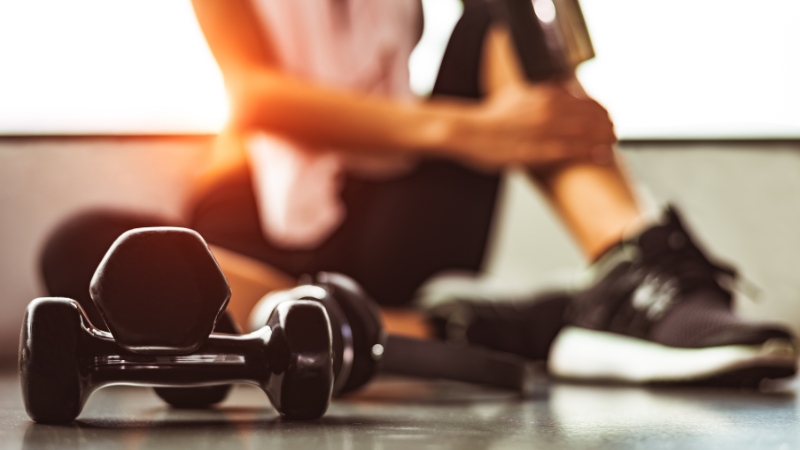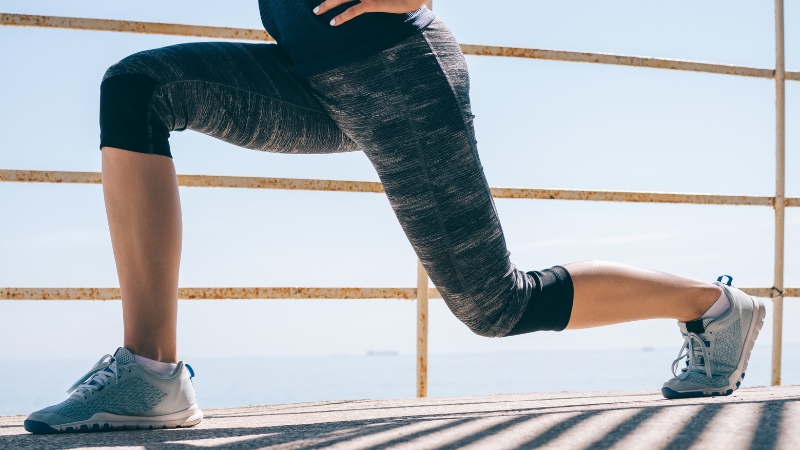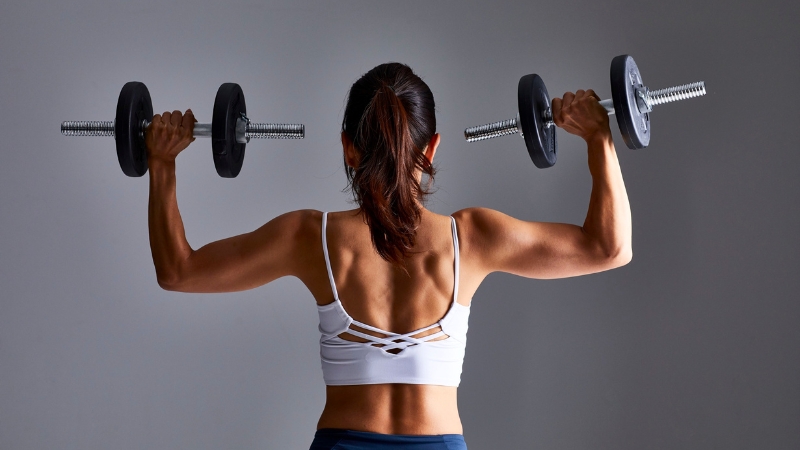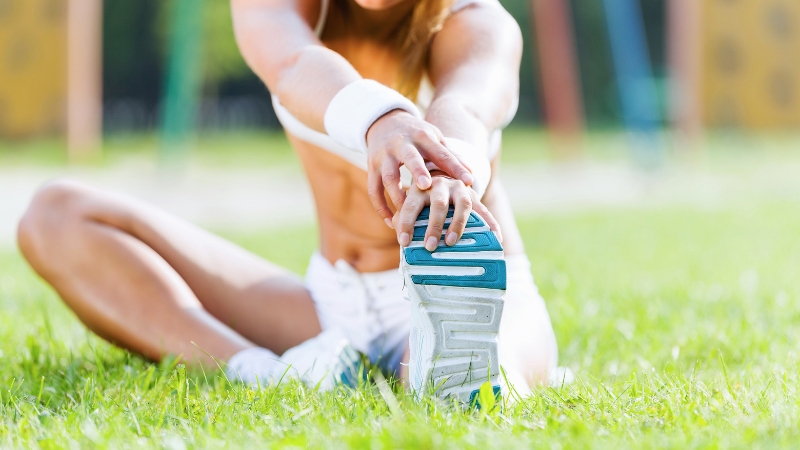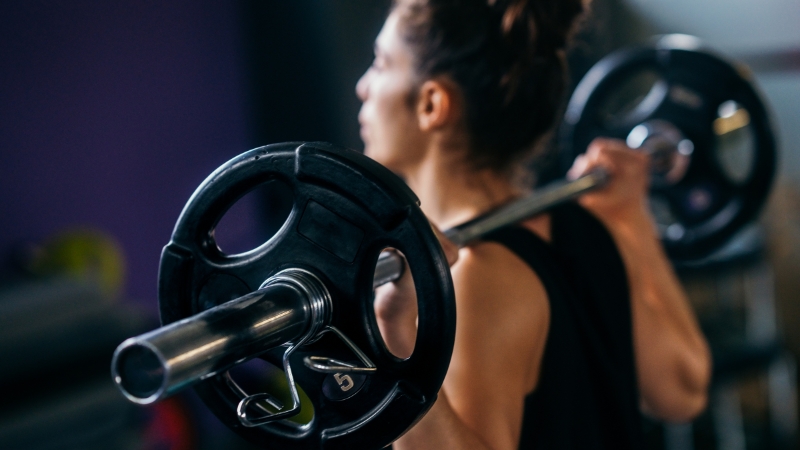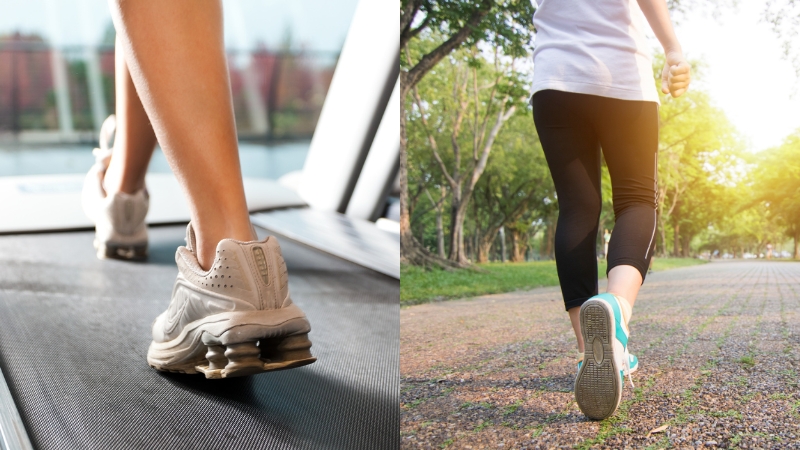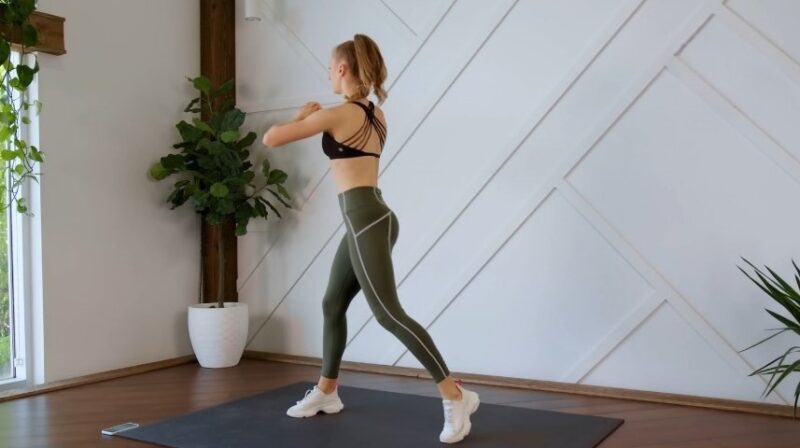
Share Post:
You don’t need to spend 45 minutes sweating to get results. The secret sauce? Consistency and quality of movement.
According to physiotherapists at Changi Sports Medicine Centre in Singapore, a 10-minute routine done regularly can:
- Increase blood circulation and alertness
- Loosen stiff joints
- Improve posture (especially if you work at a desk)
- Activate major muscle groups..
- Reduce the risk of injury later in the day.
It’s like brewing strong coffee for your body. You get warmed up, energized, and prepped for movement without going full bootcamp before breakfast.
Table of Contents
ToggleBefore You Start: Quick Tips
- Wake up, breathe first: Still in bed? Start with some deep breaths and a couple of trunk twists. Just to signal to your body that you’re awake and on its side.
- Hydrate: A glass of water (or two) can help shake off sleep inertia and get your muscles ready.
- Eat light, if at all: A slice of toast or juice is fine. But if you had a full breakfast? Wait two hours before working out.
Your Go-To 10-Minute Morning Routine

Here’s the full lineup—adaptable whether you’re 25, 55, or somewhere in between.
| Exercise | Focus | Duration |
| Jumping Jacks or Marching | Warm-up, cardio | 1 min |
| Pectoral Stretch | Posture, chest | 2×20 sec |
| Quadricep Stretch | Thighs, flexibility | 2×20 sec each leg |
| Hamstring Stretch | Back of legs, flexibility | 2×20 sec each leg |
| Wall Squats | Glutes, thighs | 3 sets of 10 |
| Calf Raises | Calves, balance | 3 sets of 10–15 |
| Shoulder Blade Squeeze | Upper back | 2 sets of 20 |
| Front Plank | Core | 1–3 reps of 20 sec |
Let’s walk through each one, with form notes, real-life tweaks, and some modifications.
1. Jumping Jacks (or March in Place)
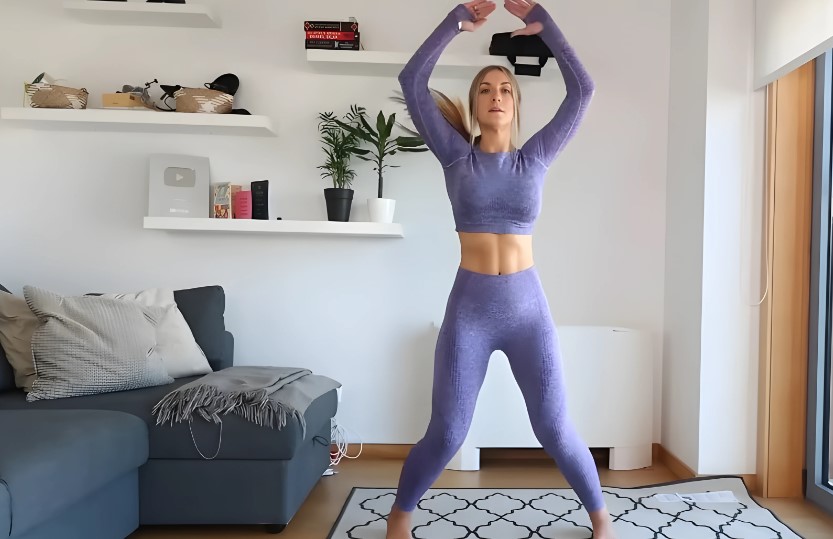
The cardio spark to start the engine.
- Start with feet together, arms at your side.
- Jump legs out and swing arms overhead.
- Return to start. Repeat.
Tip: Go easy for the first 30 seconds, then pick up speed.
Modification: If jumping isn’t for you, march briskly in place or do high knee lifts.
You want something that gets the blood pumping without requiring a ton of coordination or equipment, and jumping jacks deliver every time. If you’re stiff from sleep or the weather’s cold, start slow. A gentle bounce, arms halfway up — that’s fine. After 30 seconds, try to pick up the pace and get your full range of motion going.
If you’ve got creaky knees or a lower impact is more your speed, marching in place works just as well. The key isn’t about going big — it’s about getting your heart rate up just enough to tell your body, “Hey, we’re not sleeping anymore.” Add a little arm swing and you’re good to go.
2. Pectoral Stretch
A great reset for desk workers and screen-staring humans.
- Sit up tall on a chair.
- Raise your arms in a “goal post” position.
- Pull elbows gently back, squeezing shoulder blades.
Hold for 20 seconds. Repeat twice.
This stretch doesn’t look like much, but it’s a secret weapon — especially if you sit all day. Most people don’t even realize how tight their chest gets until they try this one. It’s simple: sit or stand tall, lift your arms like you’re in a touchdown pose, and slowly pull your elbows back.
You’ll feel it across the front of your chest and into your shoulders, right where tension tends to pile up from hunching forward. The bonus? It encourages better posture throughout the day. Do this regularly, and you might find yourself naturally sitting taller at your desk, no reminders needed.
3. Quadricep Stretch
- Hold a wall or chair for balance.
- Grab your right ankle and pull it toward your butt.
- Keep your knees together and stand tall.
Hold 20 seconds. Switch legs. Repeat twice.
If you’re a runner or sit a lot, this one is gold.
If your quads feel like stiff rubber bands in the morning, you’re not alone. This stretch helps open up the front of your thighs — the muscles that carry you upstairs, help you stand from chairs, and generally support most of your daily movement.
Grab a wall or chair for balance. As you pull your ankle toward your glutes, don’t yank — ease into it. Keep your knees together and your chest lifted. The stretch should feel gentle but noticeable. Hold for a count of 20, breathing slowly, then switch sides. If you wobble a little? That’s fine. You’re working balance too.
4. Hamstring Stretch
- Sit near the edge of a chair.
- Extend one leg out in front of you, heel on the floor.
- Lean forward slightly, keeping your back flat.
Hold 20 seconds. Switch legs. Repeat twice.
This helps protect your lower back during the rest of your day, especially if you lift, bend, or carry.
If you sit for most of your day, your hamstrings are probably tighter than you think. This stretch is a classic for a reason — it lengthens the back of your thighs and helps prevent lower back strain, especially important if you bend and twist a lot in your daily routine.
Sit on the edge of a sturdy chair, extend one leg out with your heel on the floor, and lean forward from your hips. Don’t round your back. You’re aiming for a slow hinge, not a nose-to-knee situation. You’ll feel a deep pull in the back of your leg — hold it, breathe, then switch legs. Even after one set, you’ll feel the difference.
5. Wall Squats
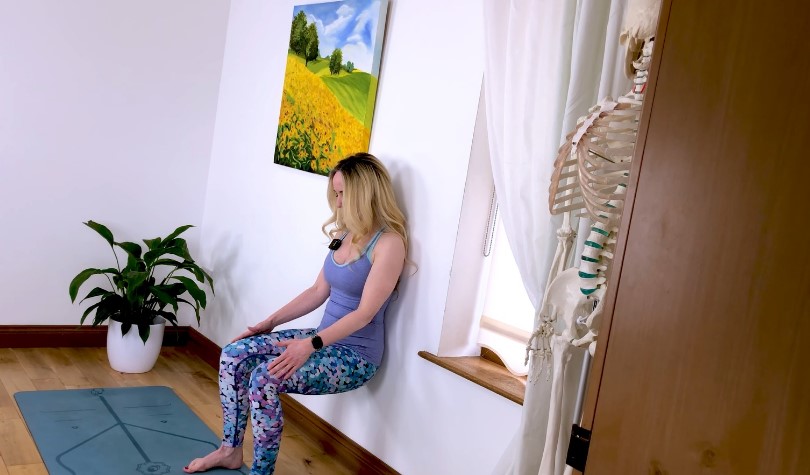
- Stand with your back against a wall, feet shoulder-width apart.
- Slide down until your thighs are parallel to the floor.
- Hold briefly, then push back up.
Do 3 sets of 10.
Safety tip: Keep your knees behind your toes. Back flat against the wall.
For beginners: Just lower a little bit, or hold the position for 5 seconds instead of full reps.
This is where the heat kicks in. Wall squats target your quads and glutes — big muscle groups that affect almost everything you do. Pressing your back against the wall gives you support while still challenging your legs to engage.
As you slide down the wall, your goal is to hit that sweet spot: thighs parallel to the floor, knees behind toes, core engaged. Don’t rush it. Even holding for a few seconds before standing back up can light a little fire in your thighs. Can’t go that low yet? That’s okay. Go halfway and build up over time. You’ll get stronger faster than you think. Also, try split squats.
6. Calf Raises
- Hold onto the back of a chair.
- Stand tall and rise onto the balls of your feet.
- Lower slowly.
Do 3 sets of 10 to start. Work up to 15.
It’s a small movement but great for ankle stability, balance, and circulation—especially if you’re on your feet a lot during the day.
Think of this one as a quiet powerhouse. It looks simple — rise on your toes, then lower — but it activates muscles that matter more than most people realize. Your calves help you balance, walk, run, climb stairs, and stabilize every step.
Start with your feet hip-width apart and hold onto something solid, like the back of a chair. Rise with control, pause at the top, then lower slowly. No bouncing. You’re building muscle, not hopping on a trampoline. Do a few sets, and you’ll start to feel the burn in all the right places.
7. Shoulder Blade Squeeze
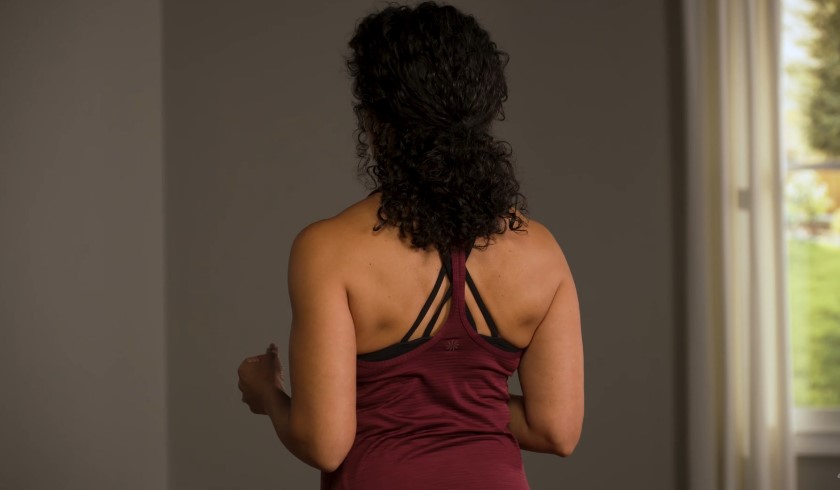
- Arms at your sides, elbows bent.
- Squeeze your shoulder blades together as if pinching a pencil between them.
- Hold for 1–2 seconds, then release.
2 sets of 20.
This strengthens your upper back, key for better posture and reduced neck strain.
You can do this one anywhere — at your desk, standing in line, even in the car (safely, of course). It’s that subtle, and that useful. Most of us carry tension in the upper back and neck, and this move helps reset your posture by activating the muscles between your shoulder blades.
Pull your shoulders down and back, then squeeze — like you’re pinching a pencil between them. Hold for a second or two, then relax. It doesn’t take much, but when done consistently, it helps with posture, reduces neck strain, and makes lifting and reaching feel smoother and easier.
8. Front Plank
- Lie face down on a mat.
- Prop yourself up on your elbows and toes.
- Keep your body straight—no sagging or arching.
Hold for 20 seconds. Repeat 1–3 times.
If this feels too intense, drop your knees or hold for shorter periods.
The final boss of the 10-minute routine. Planks look easy until you’re doing one, then the seconds like taffy. But they’re worth it. Planks target the entire core: abs, back, hips, even shoulders and glutes.
Set yourself up on your elbows and toes (or drop to your knees if needed), keep your body in a straight line, and breathe. Don’t hold your breath — that’s a rookie mistake. Start with 20 seconds. If you can do more, great. If not, no shame. One day it’s 20 seconds. Then it’s 30. Then it’s a minute. Core strength builds quietly, but it shows up everywhere.
Optional: Add a Little Flow
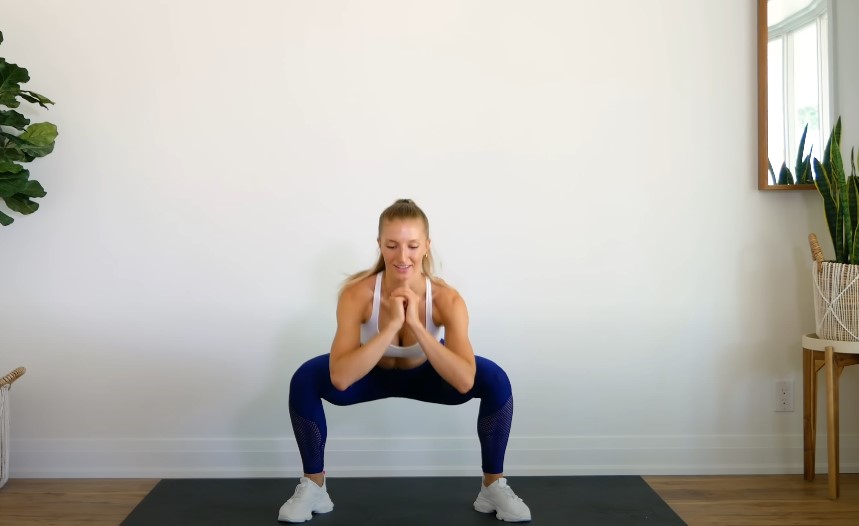
If you’re feeling energized and want more variety, pull in elements from other full-body movements:
- Good Morning + Air Squat: Hinge at the hips, then squat down. Great for the hamstrings and glutes.
- Down Dog Push-Up: Mix mobility with upper-body strength.
- Lunge Step + Reach: Open up hips and thoracic spine.
Even just swapping one of these into your rotation once or twice a week keeps the routine fresh.
Let’s Talk Equipment
Technically, you need nothing but your body.
But a good mat can go a long way—especially if you’re doing planks or floor stretches. If you’re looking for something with room to move, those extra-large mats (like 8′ x 4′) give you more space to stretch out without stepping off the edge every two minutes.
If you’re interested in boosting circulation and adding another dimension to your routine, consider a vibration plate. This tool can gently stimulate your muscles and enhance blood flow, helping to wake up the body faster in the morning. It’s a compact option that fits into small spaces and adds variety without much time or effort.
A Few More Ideas to Stay Consistent
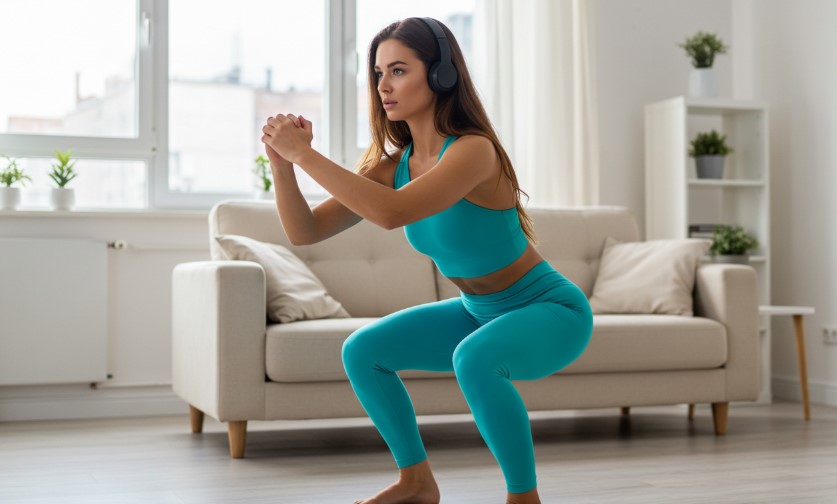
Getting started is only half the battle. Here’s how to keep showing up—even when the snooze button is calling your name.
Pick a Set Time
Attach your routine to something automatic: brushing your teeth, feeding the dog, putting on the coffee. That makes it harder to skip.
Create a Soundtrack
Build a 10-minute playlist. Something upbeat that wakes you up without frying your brain. (Instrumental lo-fi or acoustic funk? Totally counts.)
Track Your Wins
Mark off days on a calendar. Or keep a simple log: “Tuesday – full routine, felt great.” “Friday – just stretched.” Doesn’t need to be fancy—just honest.
Share It
Even telling a friend you’re doing it can help keep you on track. Or invite someone to join you over video chat once a week. Accountability helps.
Final Thoughts
No, this won’t make you look like a fitness model in 30 days. But that’s not the goal.
This is about waking up and doing something kind for your body before the chaos of the day kicks in. It’s about feeling strong enough to carry groceries without a second thought. About making fewer chiropractor visits. About showing up for work already in motion, not stiff, cranky, and half-asleep.
Ten minutes. No drama. Just momentum.
And that’s more than enough.
Related Posts:
- Tips for Maintaining an Exercise Routine as a Nurse
- How to Build a Budget-Friendly Home Gym
- Can Bodyweight Workouts Build Muscle? What to Expect?
- Morning Swimming Routines for Maximum Results: How…
- 8 Early Morning Workout Spots That Open Before 6 AM in NYC
- 10 Tips for Looking Fresh After Early Morning Workouts



